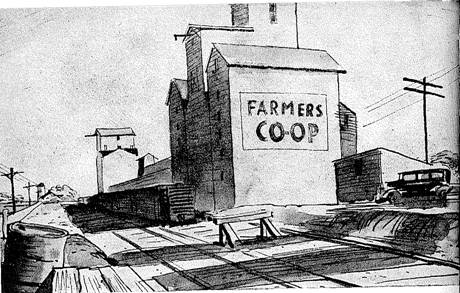How does a farm cooperative work?
By Catalogs Editorial Staff

Beneficial to coop members and society, here is how a farm cooperative works
A cooperative or co-op is a business owned and controlled by those who use them. Because co-ops are member-owned and operated, this benefits all members, which makes co-ops different from other businesses that don?t function in this manner.
The main difference in co-ops and other investor-owned businesses is the goal of meeting social and economic needs of the members rather than maximizing shareholders? profits. The organization provides services and goods to members at cost, which is different from other businesses.
Farmers join co-ops because it is to their benefit. Earnings are returned based on patronage. Moreover, the organization adds to the economic health of the community it is in, especially in rural areas. The organization bolsters family farms, assisting in capturing more income on the farm. The key is empowering farmers to do more for themselves, which results in increased profit.
A co-op is justified when there is enough produce grown in the area by farmers and the expected perks to the farmers justifies the investment required by members.
How Does a Farm Cooperative Work?
Historically, co-ops were started by those of modest means who hoped to achieve improved terms of trade and keep an equitable share of the fruits of their labor. Members were seeking mutual benefit. A fee is paid to join.
A co-op may be a farm supply-, bargaining-, marketing or credit co-op. The first pertains to those involved in manufacturing, sale and or distribution of supplies including ethan and biodiesel.
~
Marketing co-ops are in charge of handling, processing and marketing commodity grown and produced. Bargaining co-ops assist members in getting reasonable prices for the commodities they produce.
Credit co-ops entail the banks and various associations providing farmers and their cooperative with a competitive source of financial services and credit as well as export financing.
The organization undertakes various functions including packing, storing, shipping, promoting and selling the products. There is no middleman so the co-op earns profit, which is then distributed among its members, which means the producers may get higher prices than they would other wise. Because of the variety and sheer volumes offered by the members, the group can get better market terms.
The group has access to bigger and newer markets than the farmers would have if operating solo. There are tax benefits, which are passed along to the members. Other advantages include improved income opportunities, more bargaining power, ability to capitalize on new market opportunities, access to competitive markets, reduced costs, ability to manage risk and the ability to get needed services and products on a competitive basis.
When pooling resources, it lessens individual risk in the market and boosts the likelihood a farmer can get insurance for his crops, which is difficult for individual farmers when credit-constrained.
The producers come together under one umbrella and rather than selling their products individually the members sell in a cooperative, unified and coordinated effort. Another advantage is sharing information, advertising costs, the division of labor and various time and labor saving activities.
Other perks include improving the quality of economic opportunities, supporting sustainable development and revitalizing family farms that are having a hard time hanging on.
The organization gives its members more purchasing and bargaining power than they would have individually, which leads to reduction of poverty.
Popular Savings Offers











